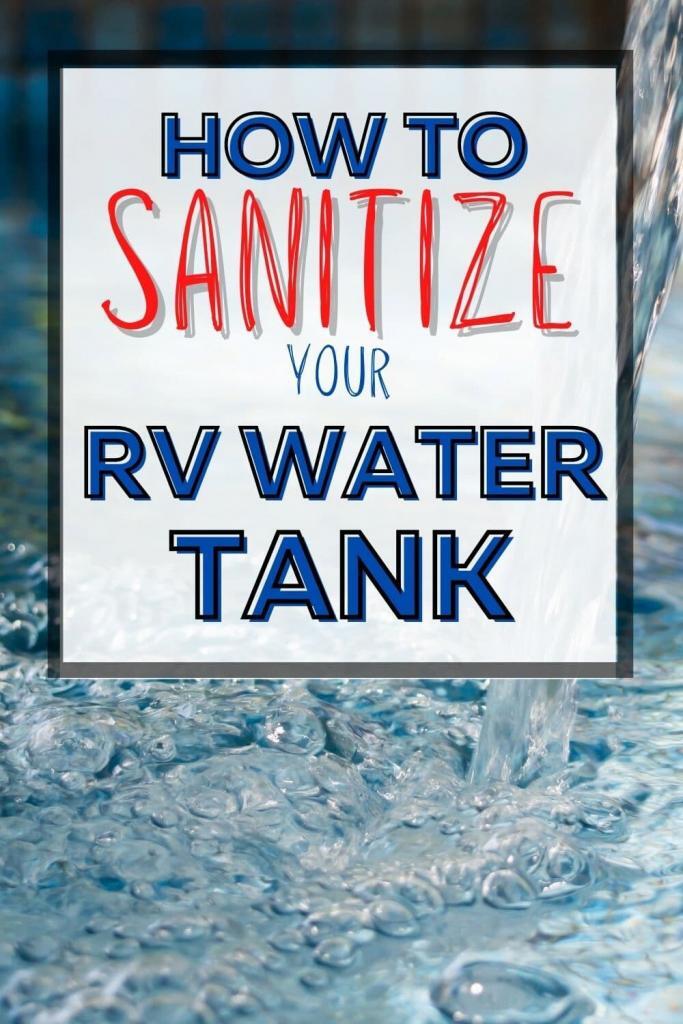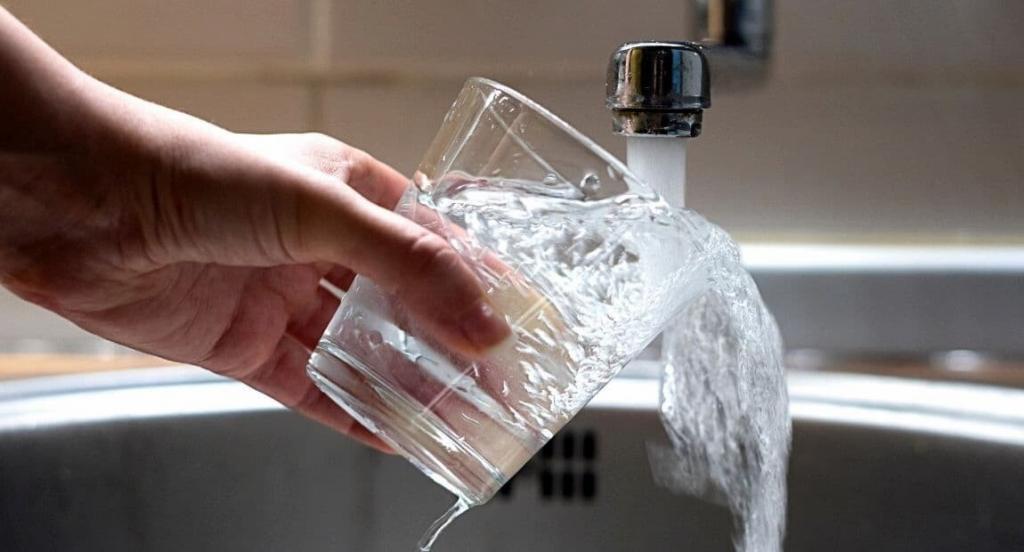If you’re new to RV’ing and find yourself wondering how to sanitize your RV water tank (or why you need to!), then this is info you don’t want to miss!
We’ll go over the best way to easily sanitize your fresh water tank, along with a few tips and tricks to get it done right.
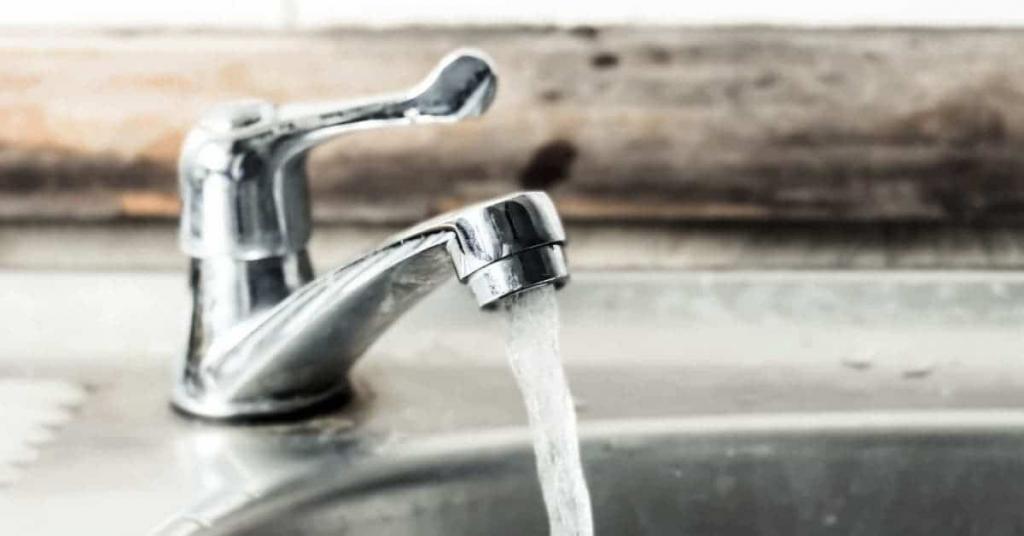
This post may contain affiliate links, which means I’ll receive a commission if you purchase through my links, at no extra cost to you. Please read full disclosure for more information.
Safe drinking water is one of the most essential elements for RV owners to consider when heading out for an adventure.
If your RV hasn’t been used for long periods, then it’s possible that the RV’s freshwater system could have bacteria growing in it.
This is not uncommon, but not at all an ideal situation.
An unsanitary water tank can cause foul odors or cause a bad taste and is a breeding ground for health problems if you ingest the water.
Why and when to sanitize the fresh water tank and water lines is a common concern so we’ll go over that along with all of the other info you need to know so that you can feel safe in knowing that your entire water system has been cleaned, sanitized, and is safe for use.
Why Sanitize An RV Water Tank?
Performing a thorough sanitization of your RV’s fresh water tank and system is essential to make sure you have a clean, safe water source at all times during your camping trip.
The RV fresh water tank, the hot water lines, and the hot water heater are all prone to bacterial growth if the system hasn’t been used recently.
Drinking or using unclean water in your camper is the last thing you would want to do!
It can cause health problems ranging from uncomfortable to severe, and no one wants to deal with sickness when they set out on an adventure.
That’s why it’s essential to sanitize your RV’s water system at the beginning of the camping season and get rid of all harmful elements to ensure that the water supply is safe for consumption.
Commonly Used Disinfectants
Not sure what to use to sanitize your fresh water tank? There are a few options, plain liquid bleach is the most common but there are people who choose to use other products.
Here are a few options that you could consider.
Bleach
Adding diluted chlorine bleach to your water tank and running it through your faucets and shower can help clean the tank, lines, and will kill most types of bacteria that may be hiding in your RV water system.
Household bleach water solutions contain around 5-6 percent chlorine and this works wonders for sanitizing and leaving you with a fresh tank.
Just make sure you don’t use bleach products that contain artificial dyes, perfumes, and other additives. Plain bleach is what you want here.

Commercial RV Water Sanitation Products
Many RV product manufacturers offer their own products to safely clean the water tank.
There are a few commercially available water system cleaners and deodorizers out there to help get the job done if you’re not interested in using bleach.
If using bleach is no-go for you (because, while it is effective, there are some health concerns) there are also bleach-free alternatives that can disinfect RV water tanks with great efficiency, while eliminating odors at the same time.

White Vinegar
Some choose to use vinegar as it can be a great alternative to bleach for sanitizing and cleaning your RV’s water system.
The acidic content of white distilled vinegar can kill harmful bacteria and other toxins collected in the water.
It not only disinfects but also clears away excess amounts of calcium from the tank.
However, some say that they don’t like using vinegar for the job as it temporarily leaves a strong odor and flavor to the water and the water must be heated to be effective.

Baking Soda
Baking soda also proves to be a good deodorizing solution for your RV water tank and can help remove buildup in the water system.
It’s not efficient at killing bacteria compared to bleach, which is why some people use vinegar for sanitation, followed by neutralizing the water with baking soda.

Steps To Sanitize An RV Water Tank
It takes just a few easy steps to sanitize your RV fresh tank and fresh water system and requires only a few easily available supplies.
What you Need
- Household chlorine bleach (with no added scent or chemicals)
- A measuring cup
- A clean funnel
Once you have your supplies ready, you can start on the simple steps to sanitation!
Step 1: Drain The Water System
The first thing you want to do is make sure you switch off the hot water heater and allow it to cool before you drain the fresh water system of your RV to prevent damage to the heater.
A water pump may come in handy to ensure that all the water is drained out.
After you let all of the water drain out of the RV, make sure that all faucets are closed (turned off) and remove any inline or external water filter or purification equipment.
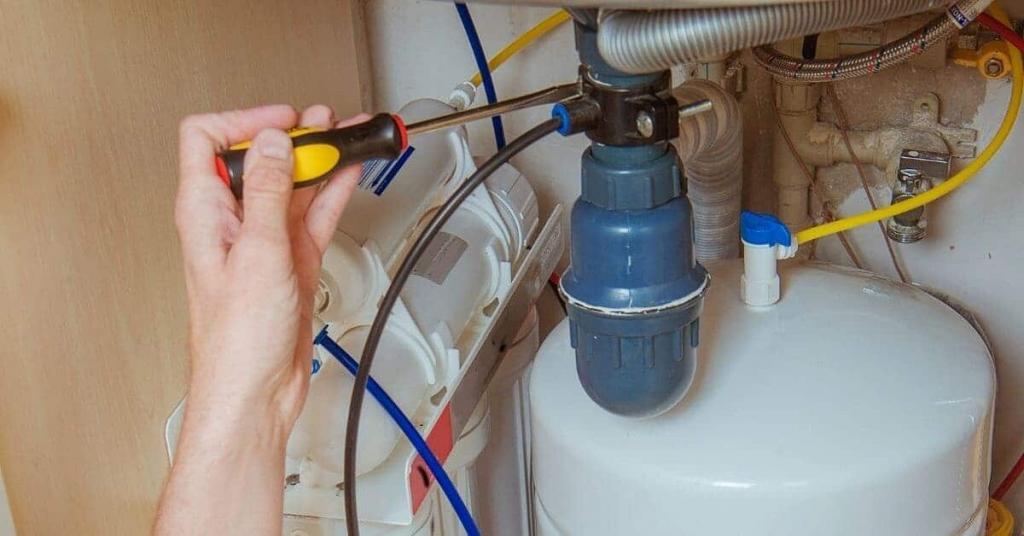
Step 2: Add Bleach to the Fresh Water System
Add about 1/4 cup of bleach per 15 gallons of water in the RV tank.
Avoid adding the bleach to the RV’s water tank directly.
Instead, dilute it by adding the bleach to at least one gallon of water before putting it into the system.
Using a funnel to pour the water-bleach cleaning solution into the fresh water holding tank can help make the job a little easier.
Step 3: Fill the System with Potable Water
To make the bleach solution go throughout the system and ensure complete sanitization, fill the fresh water tank with clean water.
If possible, take your RV for a drive. This will help the bleach water splash around in the tank and ensure that even the top gets a good cleaning.
After your drive, turn on all the faucets to allow the solution to run through and sanitize each faucet and the shower. Check each faucet, you should be able to smell bleach slightly.
Let the water run for a few minutes and then be sure to turn the faucets off after a thorough circulation of water.
Step 4: Let The Bleach Solution Sit
While circulating the bleach solution through the freshwater system of your RV is a great start, it is not quite enough to perform a complete sanitization.
So, it’s a good idea to let the cleaning solution sit in the system for at least 4-12 hours if you can.
Step 5: Drain All Water and Then Flush the System
After the bleach solution has been circulated through the faucets, jostled around on your drive, and sat for many hours, it’s time to drain the water.
After the water has been drained, you’ll want to add fresh water into the system and circulate it throughout using a water pump.
Flush the system with all the faucets open until you no longer smell bleach.
Step 6: Flush The Lines Again (Just To Be Safe!)
To make sure you eliminate all the bleach from the water system, it may be necessary to flush the tank and lines multiple times.
This final step is important to get rid of all the bleach mixture and ensure you have safe water.
Step 7: Replace Water Filters
After you have flushed the system a few times, it’s recommended to replace any water filters, followed by filling the system and starting fresh with the water heater turned on.
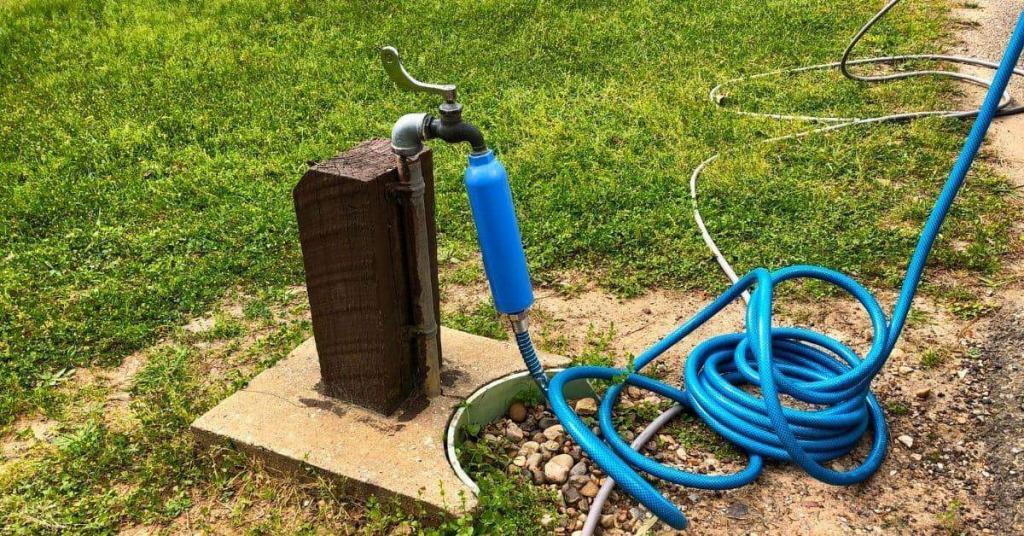
Well, those are the basic steps needed to sanitize your RV water tank so that you can have fresh, clean water that is safe to drink and has no yucky odor.
Wondering how often you should sanitize and disinfect your RV water system?
That depends…
FAQs About RV Water Sanitation
Need a little more information before jumping into cleaning the fresh water system in your camper? No problem! Here are a few frequently asked questions related to sanitizing your RV water tank
1. How Often Do You Need To Sanitize The RV Water Tank?
Sanitizing and disinfecting your RV water tank every six months is often recommended (be sure to check your owner’s manual for instructions specific to your make and model!),
However, you may need to follow a more regular schedule if you are not using your RV or the water system regularly.
If you have just purchased your RV, suspect an issue with water quality, notice an odor (a common one is a rotten egg smell), or find out that the water in your tank was under a boil advisory due to contaminants, you will definitely want to empty, disinfect, and sanitize your RV tank and water system.
2. Is RV Water Safe To Drink?
As long as the fresh water tank and system is maintained properly RV water is typically safe to drink. But, if you’re ever doubtful, clean your tank and use bottled water just in case until the situation can be remedies.
3. Do You Have To Santize The White Drinking House?
Definitely! The same rules apply to the water hose that connects your camper to the RV park or campground spigot as the RV water system. You’ll want to sanitize this hose at least every six months or if you…
- purchase a new camper
- notice a bad smell
- notice a bad taste
- or have been notified that water needs to be boiled
4. Is Hydrogen Peroxide A Good Option To Santize RV Water Tanks?
In theory… maybe, but the peroxide/water mixture used for sanitizing must be heated to 130 degrees (Farenheit) and be in contact with the surfaces for at least 10 minutes.
A valid concern by many is that the 130 degree water temperature may be difficult to maintain for the full 10 minutes.
And without heating the water, just using hydrogen peroxide purchased from the grocery store is not a good option for sanitizing your RV’s fresh water system, it’s just not strong enough.
As people that live as naturally as possible we can totally understand why this question is asked so often (especially because of the side effects associated with bleach), but you don’t want to use a solution that is not strong enough and get sick from germs or bacteria in your water. You would be trading one problem for another.
If you are looking for a bleach free option you could try vinegar, but again, to be as effective as bleach the water/vinegar solution needs to be heated to 130 degrees (Farenheit), which is possible but extra research, care and attention will need to be taken before jumping right in.
Ultimately, the choice of how you will sanitize your freshwater tank and the entire system is yours. Just be sure to read up on the subject before choosing a bleach alternative!
A Few Last Tips…
Don’t ever attempt to sanitize the water tank and lines with water that’s not safe for consumption, that’s just a bad idea.
Also, it’s important to remember to flush the water heater out before sanitizing the RV water tank. You don’t want contaminated water recirculating through the sanitized system!
And finally, when you drain the bleach solution used to sanitize the system, be careful about letting that drain onto the ground.
That solution can kill plants and also shouldn’t be in an area where children or pets can get to it. In fact, if you’re staying in a campground and need to disinfect your tank, most will not let you drain water onto the ground so be sure to ask about their rules regarding this.
That’s all there is to sanitize your RV water tank. Easy, right?!
Well, I hope that this info was helpful and you feel confident enough to get out there and get the job done before your next camping trip. Good luck!
Related Articles
- Top 5 RV Water Filters: Find The Best Option For Your Needs!
- Learn Everything You Need To Know About RV Antifreeze (Before Winter!)
- Buying A Used RV: 19+ Must-Have Tips & Helpful Advice
